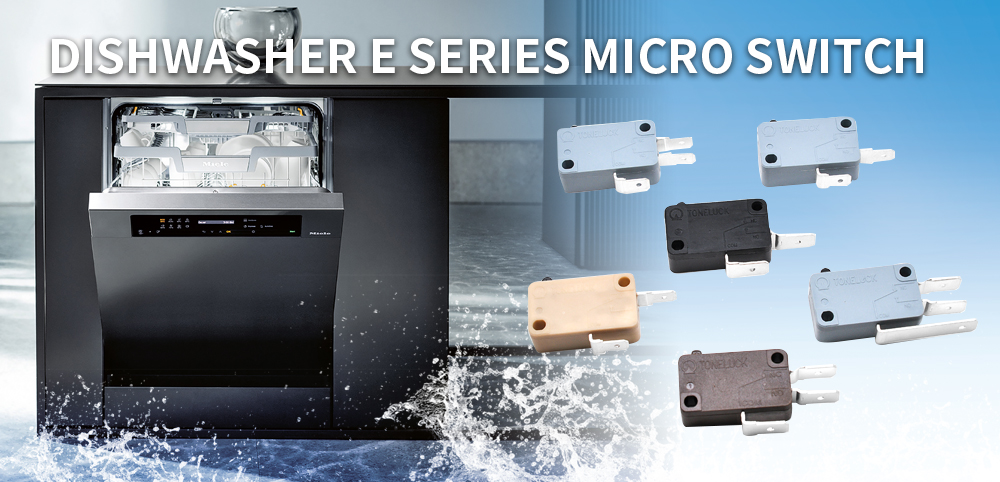Dishwashers are common kitchen appliances in the home, which can save people a lot of time and energy. In order for the dishwasher to be able to complete the task smoothly, it needs to be equipped with a variety of sensors and control modules. One of the important components is the microswitch.
A microswitch is an electronic component commonly used to identify the position or motion of an object and output an electrical signal when a set threshold is triggered. In the dishwasher, the main function of the E series micro switch is to detect the position or state of the dishwasher door, so as to control the washing process.

The microswitch detects if the dishwasher door is closed before it starts running. If the dishwasher door is not closed, the micro switch will send a signal to the control module that the dishwasher cannot start working. When the user closes the dishwasher door, the E Series micro switch again checks the status of the door and sends a control signal to the control module, telling it to begin the dishwashing process.
A dishwasher is an electronic industrial product, which needs to consider many factors in the design and manufacturing process, including physical structure, electronic components, control algorithms, user requirements, and so on. Here we will analyze dishwasher design from five aspects.
1. Physical structure
The physical structure of a dishwasher is one of the most basic design factors. Most dishwashers have a similar physical structure: the interior consists of a shell-shaped cleaning chamber and tray, and the exterior consists of control switches, faucets, water pipes, and other components. When designing the physical structure, a number of factors need to be considered, including the cleaning effect, the layout of the internal structure, the flow of the waterway, etc.
2. Electronic components
Dishwashers need to be equipped with a large number of electronic components, including sensors, motors, control modules, and so on. The selection and arrangement of these components need to be optimized according to the actual situation of the dishwasher, so as to ensure that the dishwasher can work normally and there will be no failure.
3. Control algorithm
The control algorithm of the dishwasher is very complex and needs to be optimized by combining internal sensors and external user requirements. For example, if a user chooses a fast wash mode, the dishwasher needs to adjust the water flow and wash cycle accordingly to maximize results and reduce energy consumption. This kind of algorithm design usually requires the integration of many different technologies, including machine learning, adaptive control, and so on.
